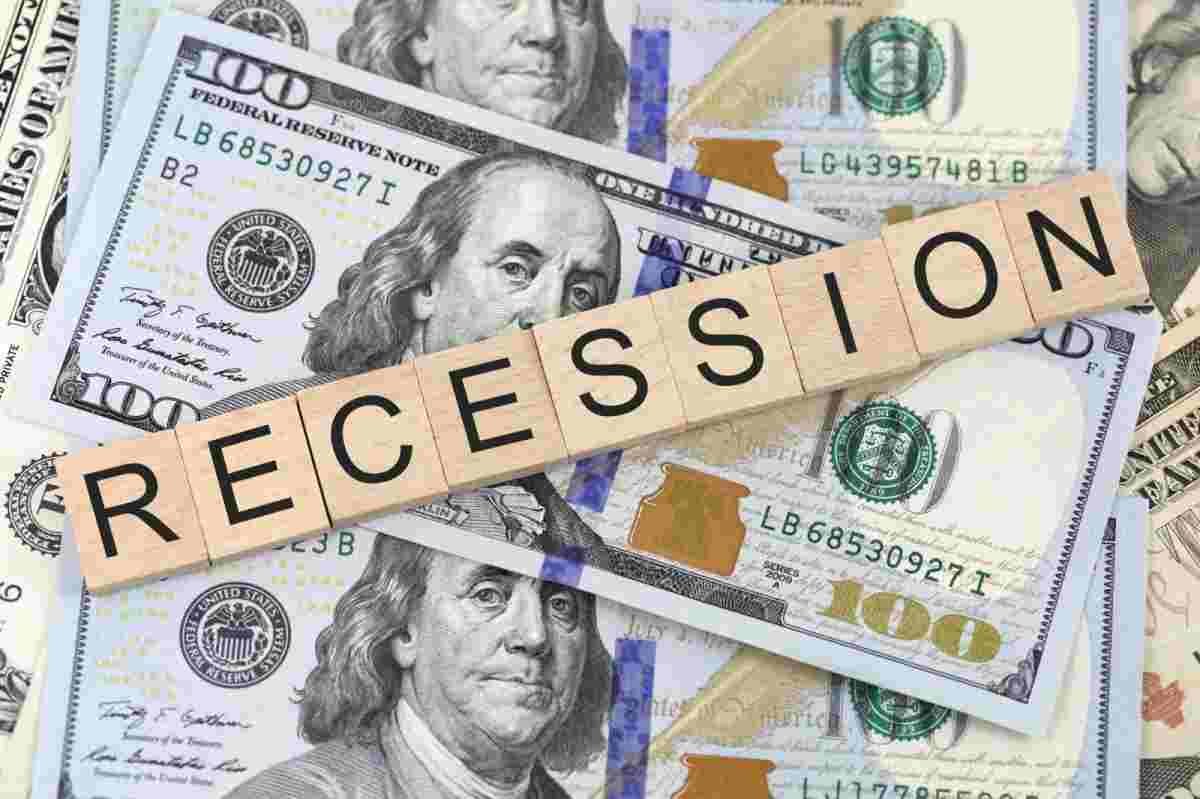Economic Recession
An economic recession is a period when a country’s economy is not doing well, industrial production and business activity are at a low level and there are many unemployed people.
Example of economic recession:
- Many companies were affected by the recession and went bankrupt.
- For the second time in ten years, the government has pushed the economy into a deep and destructive recession.
- The demand for new cars has fallen due to the recession.
- Until recently the country’s economy had been insulated from recession by reserves of raw materials.
- The recession has caused many small businesses to go bankrupt.
Global Recession
A global recession is a recession that affects many countries in the world — that is, a period of global economic slowdown or a decline in economic output.
Economic Recession Indicator
There was a decline in the following 5 economic indicators:
1. Decrease in gross domestic product.
2. Decreased income.
3. Decrease in employment.
4. Manufacturing decline.
5. Decline in retail sales.
How to calculate recession?
The working definition of a recession is two consecutive quarters of negative economic growth as measured by a country’s gross domestic product (GDP).
More and more economists are seeing a specter called recession.
Pandemic-related waste, supply chain bottlenecks from Chinese restrictions, and Russia’s invasion of Ukraine, among other factors, have pushed inflation to unprecedented levels. seen for decades.
To deal with it, central banks are resorting to textbooks and raising interest rates, while stock markets – with US indices as a benchmark – react with prolonged declines that reflect investors’ lack of confidence in what waits.
Read also: War in Ukraine | Why did Putin choose war?
World “on the brink of a global recession”, according to the IMF
On Tuesday July 26, 2022 the International Monetary Fund lowered its global growth forecast for 2022 to 3.2%, while deeming the economic outlook “increasingly bleak and uncertain”.
And what many believe is ahead of us is recession: a slowdown in economic activity resulting in negative gross domestic product (GDP) growth.
A term of two consecutive quarters of economic contraction in GDP is generally set to decree a “technical recession”.
Seven in ten US economists believe it will come this year or next, according to a recent survey by the Financial Times and the University of Chicago Booth.
The survey was conducted in early June, ahead of the latest “black week” in stock markets and another rate hike, so the ratio is likely to have risen.
The recession has bitter consequences: the fall in investment, consumption and transactions leads to business closures, downsizing, massive job losses and an inability to pay debts which can lead to bankruptcy many people.
BBC World asked four leading economists if they think there will be a recession in the United States and around the world in the near future.
Read also: Economic Systems | List, Type and Explanation
Causes of Economic Recession
A decline in gross domestic product growth is often listed as a cause of recession, but it is more of a warning signal that a recession is already underway. That’s because GDP is only reported after the quarter ends. By the time GDP turns negative, the recession may have lasted for several months.
It can be triggered by a variety of events, such as a financial crisis, external trade shock, adverse supply shock, a pandemic or the bursting of an economic bubble.
To qualify as an official recession, an economic downturn, measured as a decline in GDP, must occur for two or more consecutive quarters.
1. Loss of Confidence in Investment and the Economy
Loss of confidence causes consumers to stop buying and go into defensive mode. As soon as the critical mass moves towards the exit sign, panic sets in. Retail sales are slow.
Businesses run fewer job ads, and the economy adds fewer jobs. Manufacturers are less responsive to a drop in orders — the unemployment rate is rising. To restore confidence, the federal government and the central bank had to step in.
2. High Interest Rate
When interest rates rise, they limit liquidity, i.e. money available to invest. In the past the biggest culprit was the Federal Reserve, which frequently raised interest rates to protect the dollar. For example, the Fed raised interest rates to combat stagflation in the late 1970s, which led to the 1980s recession.1 2
Decades earlier, the Fed did the same to protect the dollar/gold relationship, exacerbating the Great Depression.
3. Stock Market Crash
A sudden loss of confidence in investing can create the next bear market, draining capital from the business.
4. Falling Housing Prices and Sales
As homeowners lose equity, they may be forced to reduce expenses because they can no longer take out a second mortgage. This was the initial trigger that triggered the Great Recession. Eventually, the bank loses money on complicated investments based on the base value of the house, which declines
5. Manufacturing Orders Slowed
One predictor of recession is a decline in manufacturing orders. Durable goods orders began falling in October 2006, long before the 2008 recession hit.
6. Deregulation
Lawmakers could trigger a recession by removing essential protections. The seeds of the S&L crisis and subsequent recession were planted in 1982 when Garn-St. Germain Depository Institutions Act passed. This removes the loan-to-value ratio restrictions for these banks.
7. Poor management
Bad business practices often lead to recessions. The Savings and Loans Crisis led to the recession of 1990. More than 1,000 banks, with total assets of $500 billion, failed due to overturned land, questionable loans, and illegal activities.
Also read: Ponzi Scheme Fake Investment | Definition and Mode of Operation
8. Price-wage control
Fortunately, this only happened once. In 1971, President Richard Nixon froze wages and prices to stop inflation.8 But employers laid off workers because they were not allowed to lower wages. Demand falls because families have lower incomes. Companies could not reduce prices, so they laid off more workers, causing the 1973 recession.
9. Postwar Slowdown
The economy slowed down after the Korean War. This led to the 1953 recession. A similar reduction after World War II led to the 1945 recession.
10. Credit Crunches (decreased lending activity by financial institutions)
This happened in 2008 when Bear Stearns announced a loss thanks to the collapse of two hedge funds it owned.
The funds are heavily invested in collateralized debt obligations. When Moody’s downgraded its debt rating, banks that were in a state of overinvestment similar to panic. They stopped lending to each other, creating a massive credit crunch.
11. When the Asset Bubble Explodes (Market Bubble)
An asset bubble occurs when the price of an item such as gold, stocks, or housing soars beyond its sustainable value. The bubble itself sets the stage for a recession when it bursts
12. Deflation
Falling prices over time have a worse effect on the economy than inflation.
Deflation reduces the value of goods and services sold in the market. It encourages people to wait to buy until the price is lower. Demand fell, causing a recession.
The deflation caused by the trade war exacerbated the Great Depression.
13. Natural disasters and disease outbreaks
For a recession to occur, its effects must spread beyond manufacturing, the travel business (travel, tour, aviation, etc.) and other sectors directly affected by the natural disaster or disease outbreak.
Sources: The Balance, Quora, Investopedia, Cambridge Dictionary, Economics Help, Raj & Co, New York Times, Wall Street Mojo, The New York Times
Photo credit: Recession by Nick Youngson CC BY-SA 3.0 Pix4free



